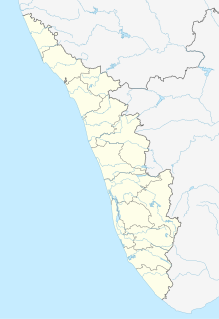The Archaeological Survey of India lists a number of ancient monuments within the Thrissur Circle, covering Kerala and parts of Tamil Nadu in India. [1] 10 Monuments of National Importance have been recognized by the ASI in Thrissur circle of Tamil Nadu. [2]

The Archaeological Survey of India is an Indian government agency attached to the Ministry of Culture that is responsible for archaeological research and the conservation and preservation of cultural monuments in the country. It was founded in 1861 by Alexander Cunningham who also became its first Director-General.

In British law, an ancient monument is an early historical structure or monument worthy of preservation and study due to archaeological or heritage interest. The term differs from the American term "National Monument" in that U.S. National Monuments are comparatively few in number and may include natural formations; British ancient monuments are by definition manmade.

Thrissur, originally Thri Siva Peroor and previously known by its anglicised form as Trichur, is the fifth largest city, the third largest urban agglomeration in Kerala. Thrissur is also known as the "Cultural Capital of Kerala" because of its cultural, spiritual and religious leanings throughout history. It is the headquarters of the Thrissur District. The city is built around a 65-acre (26 ha) hillock called the Thekkinkadu Maidan which seats the Vadakkumnathan temple. Thrissur was once the capital of the Kingdom of Cochin. It is located 300 kilometres (186 mi) towards north-west of the state capital Thiruvananthapuram. One of the main cultural events in Thrissur is the Thrissur Pooram, which attracts quite a number of tourists and travellers.











